Public Life
Charles Cavendish’s administrative skills were valued in arenas outside of family affairs, politics, and science, in the founding and working of several organizations. Each of the organizations had a technical dimension, and the people he worked with were often the same people he worked with in politics and science. In the first section of this chapter, we briefly consider the organizations, beginning with a hospital.
For twenty years Robert Walpole
This fashionable charity needed administrators who were both able and hardened to the task, for conditions of life in an eighteenth century foundling home were depressing. During the first four years the Hospital admitted children indiscriminately, whether or not they were true foundlings—exposed and deserted children who would otherwise die—nearly 100 a week at times. Of the roughly 15,000 children received then, over 10,000 did die, a mortality rate of about seventy percent. From the provinces, infants were transported under desperate conditions to the Hospital, where they were dumped, sparing parish officials the trouble and expense of maintenance. To avoid the cost of burial, parents abandoned children there, more dead than alive. The administrators of the Hospital had to deal with the consequences of their policy and ultimately with the policy itself.
With the desire to put its children to work, the Foundling Hospital turned for help to the whitefish industry. The Society of Free British Fisheries
We do know that Cavendish took an active interest in the Society of Free British Fisheries, as we would expect, repeatedly serving on its Council. The industrialist James Lowther
Closer to Cavendish’s
In the usual British way of addressing social needs, a public library in London came about through private rather than government initiative. When Hans Sloane
Sloane’s will did not name Cavendish as one of the trustees, but it included him in a long list of “visitors,” starting with the king and the prince of Wales, who were charged with watching over Sloane’s possessions.10 To get from the dignitaries to the working staff—the librarian and underlibrarians—Parliament approved a complicated plan. A manageable but still large number of persons were selected from the trustees and visitors and given the responsibility of electing fifteen persons. These so-called “elected trustees” were to appoint a standing committee to meet regularly with the staff and take charge of the management of the Museum. Cavendish became a trustee in the first election, in 1753, and he was appointed to the standing committee in its first year, in 1759. The latter included Cavendish’s relative Philip Yorke
From the start, the British Museum was warmly welcomed by fellows of the Royal Society, who volunteered their services. Most of the first trustees were fellows of the Royal Society or of the Royal Society of Antiquaries or both; eleven of the first elected trustees were fellows of the Royal Society, and of the thirty-one trustees who were elected from the beginning of the British Museum
Cavendish was involved in every stage of preparation for the opening of the Museum in 1759. As a member of the standing committee, he examined Sloane’s insects, birds, and other animals, finding some in good condition and others in a predictable state of decay. He helped to inspect Sloane’s books and to compare the contents of Sloane’s cabinets with catalogs in forty-nine volumes. By 1755 Cavendish’s name sometimes headed the list of trustees at the general meetings, despite the number of peers who could come and whose names would have preceded his if they had. In time attendance at the weekly committee meetings dropped to five or so, but Cavendish always came, and when Macclesfield did not come, Cavendish presided, or at least he headed the list of persons attending: in the six months from May to November 1755, Cavendish attended thirty-four meetings of the standing committee, at twenty of which he presided.12 Cavendish was a man of public affairs with broad interests and administrative skills, who could be counted on absolutely, not the least of the reasons why his services were valued in the British Museum
Places of Public Service
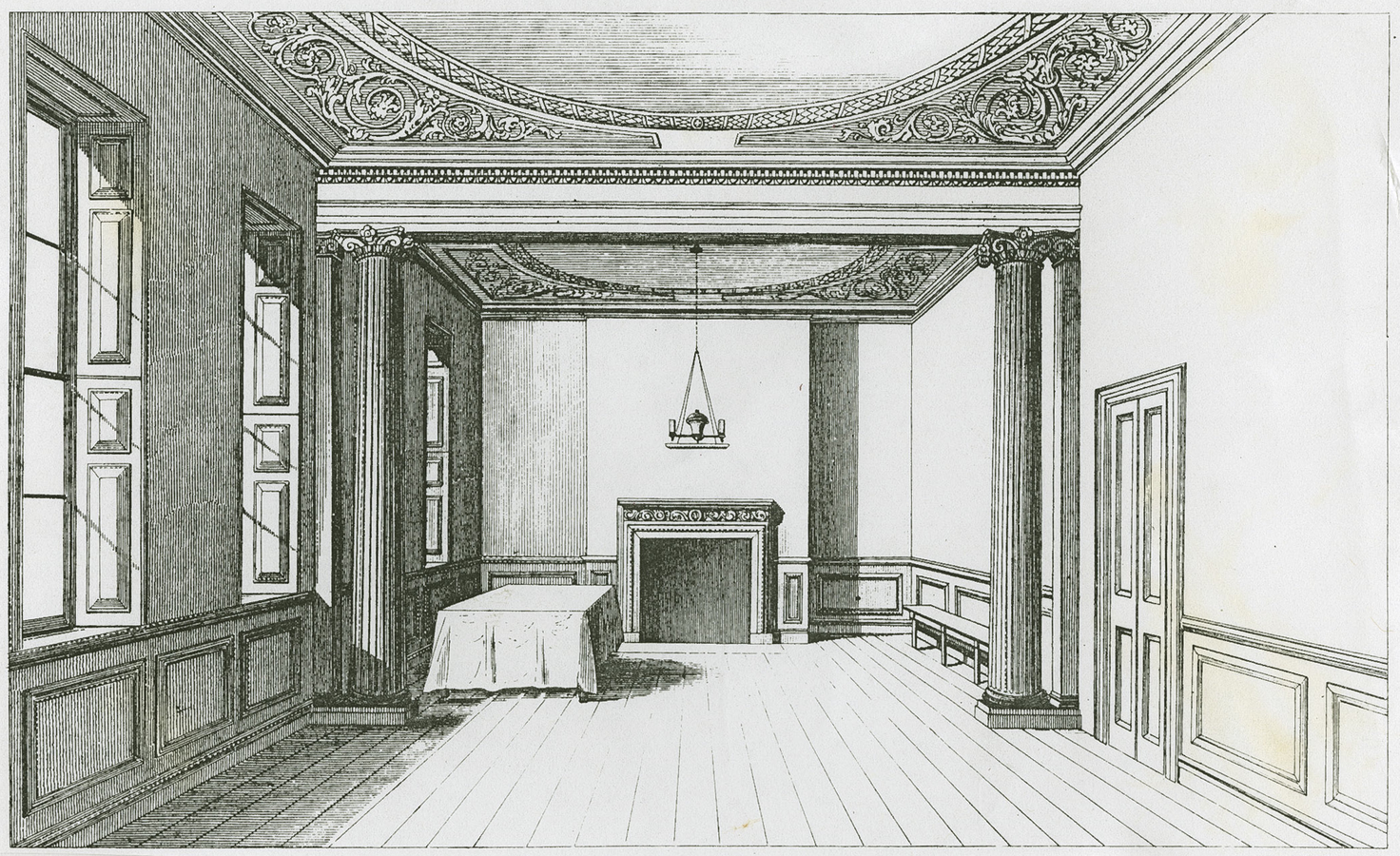
Fig. 5.1: Royal Society. Through Charles Cavendish’s time, the Royal Society met in this room at Crane Court. It had long departed when this print was made in 1848. Frontispiece to the first volume of Charles Richard Weld, A History of the Royal Society, 2 vols. (London, 1848).
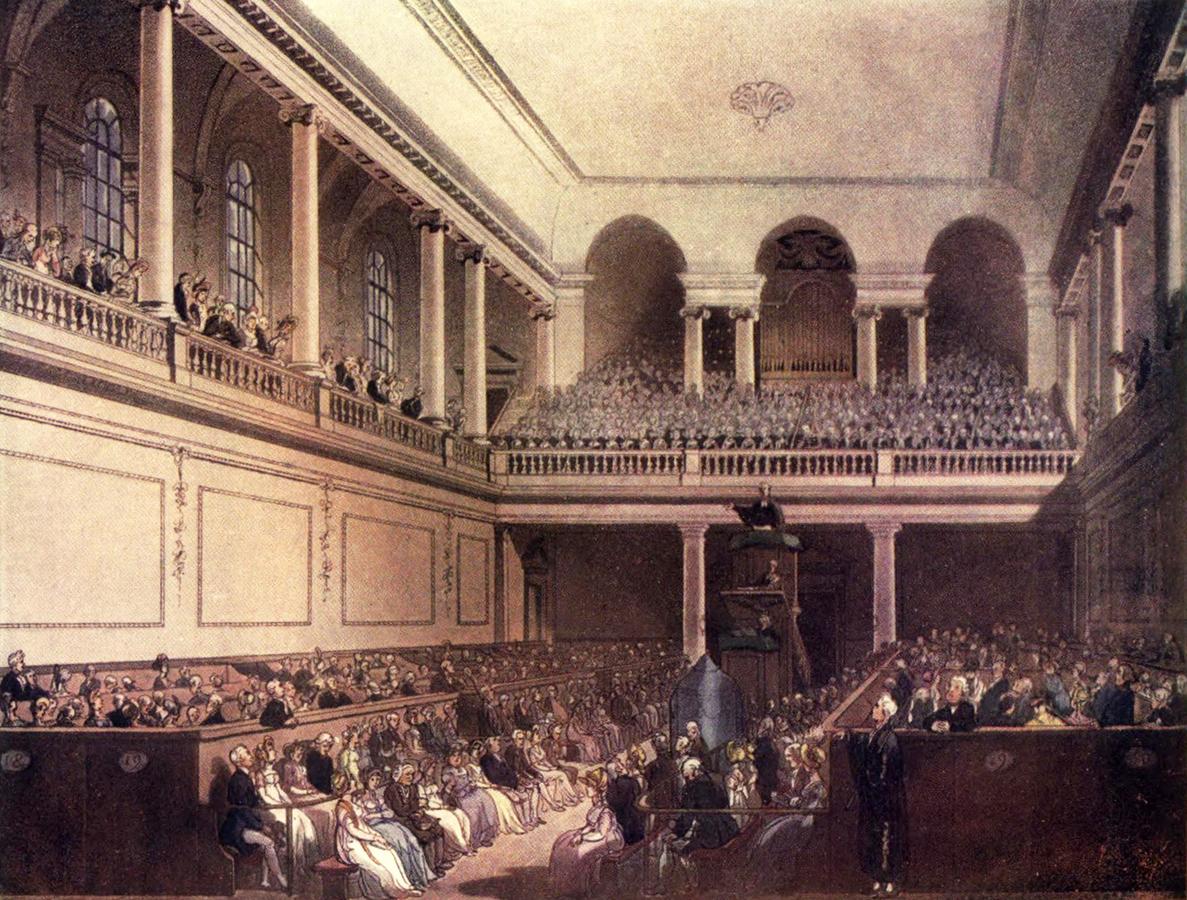
Fig. 5.2: Foundling Hospital. The Chapel. By Thomas Rowlandson and Augustus Charles Pugin for Ackermann’s Microcosm of London (1808–11). Demolished. Lord Charles Cavendish was a governor of this institution from the year of its charter, 1739. Wikimedia Commons.
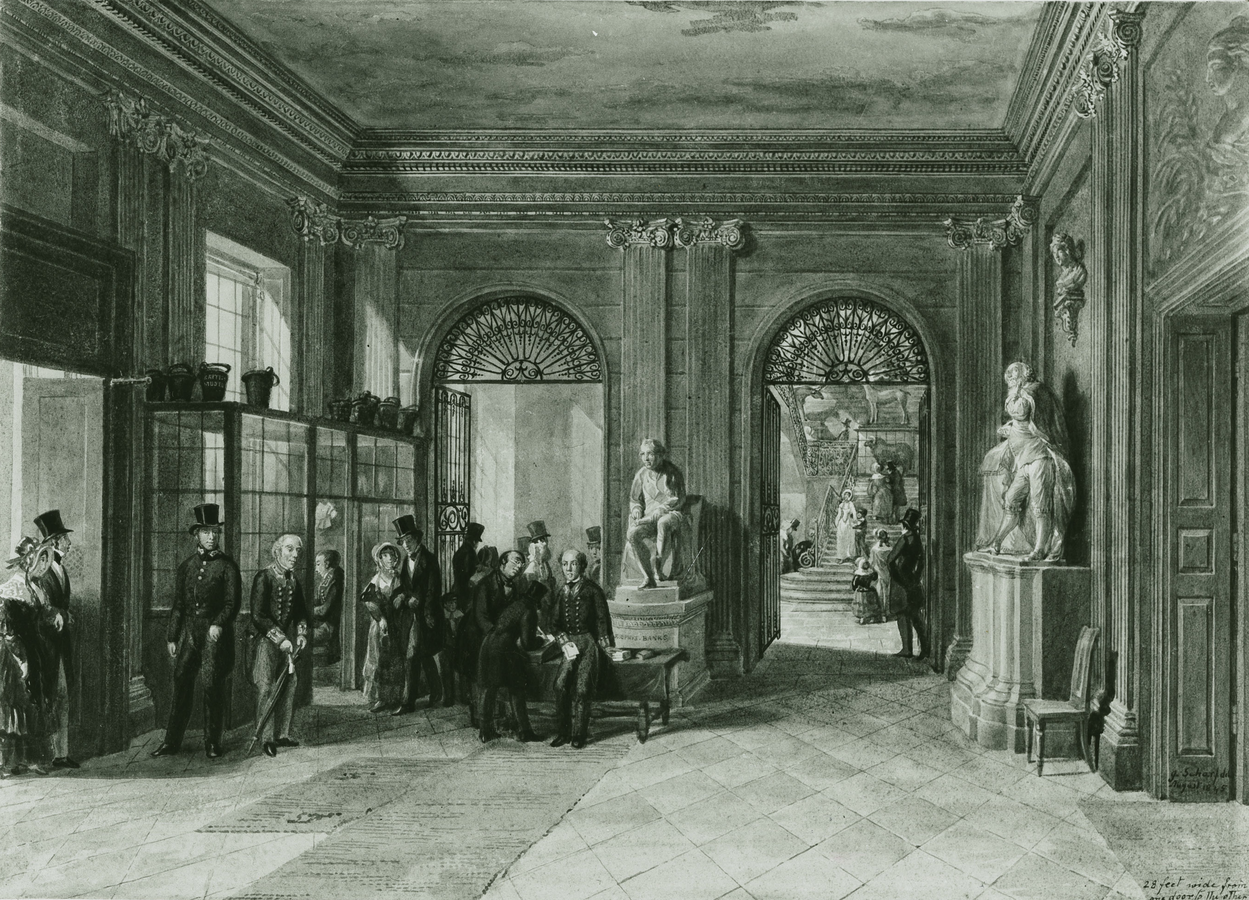
Fig. 5.3: British Museum. Entrance to the Old British Museum, Montagu House. Visitors are seen entering from the left; through the arched gateway on the right visitors are seen on the staircase. The statue inside the room is of Joseph Banks, former president of the Royal Society. Charles Cavendish became a trustee of the Museum at its first election in 1753. Henry Cavendish was elected a trustee in 1773.
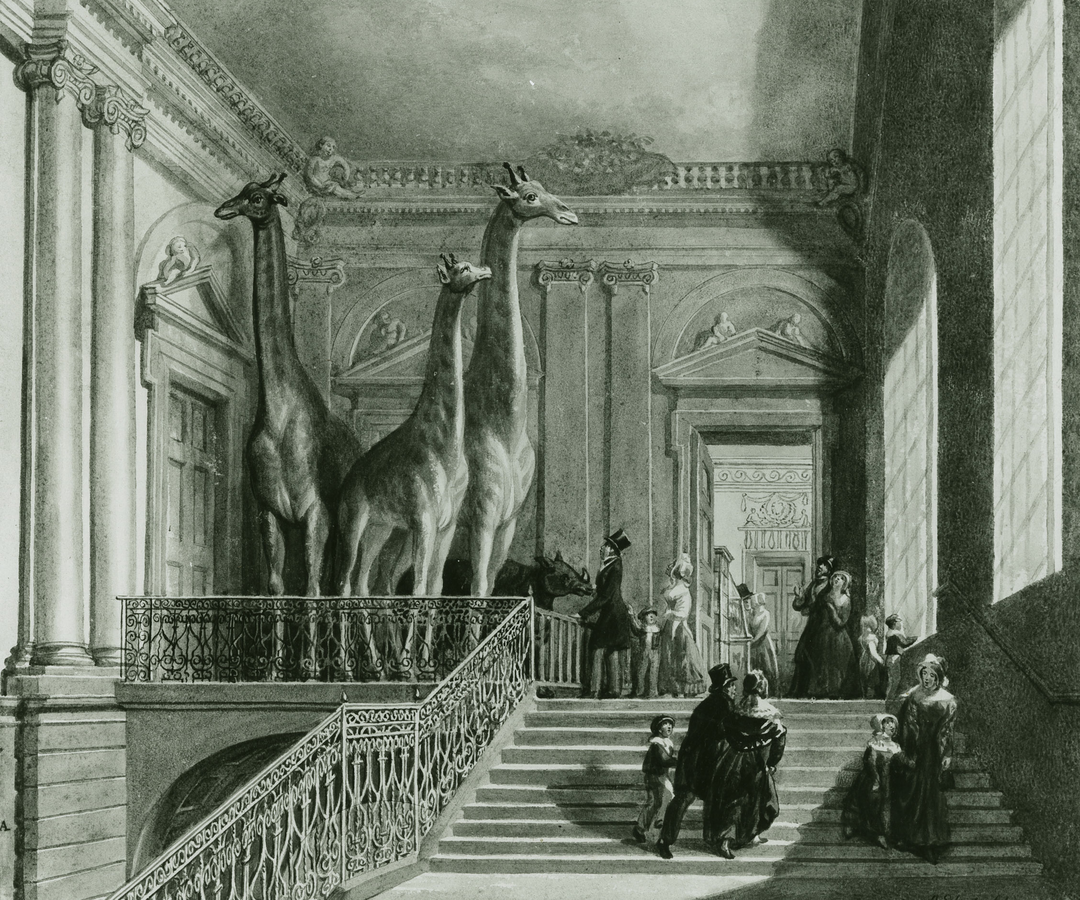
Fig. 5.4: British Museum. Staircase of the Old British Museum. Visitors are shown on the stairs and on the landing looking at stuffed animals. The giraffes look to be outgrowing the house. This was true in a sense, for by the time of this painting, most of the contents of the overcrowded and dilapidated Montagu House had been removed to the new home of the Museum. Watercolors by George Scharf, the elder, 1845. Reproduced by permission of the Trustees of the British Museum.
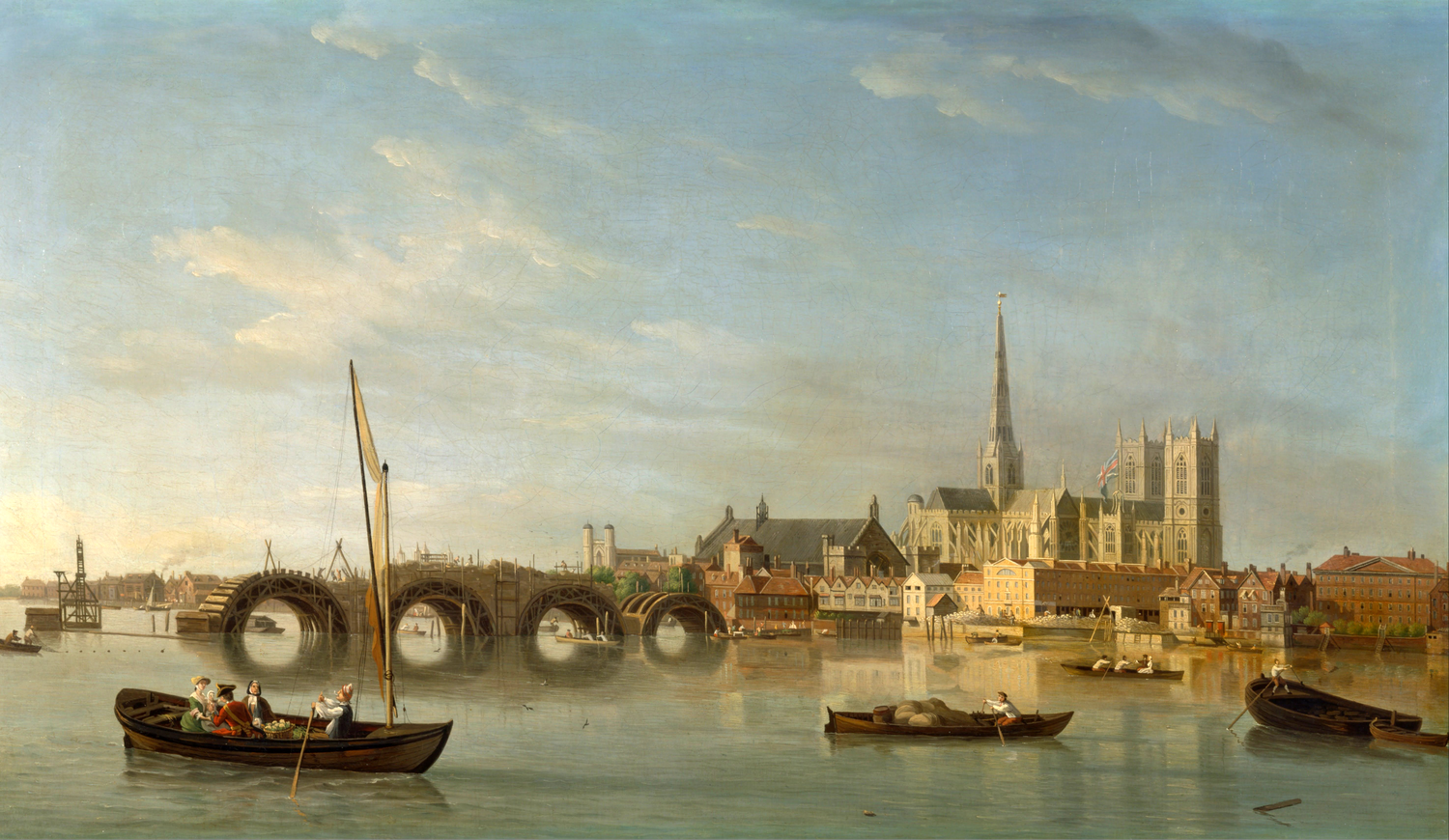
Fig. 5.5: Building of Westminster Bridge. Painting by Samuel Scott, circa 1742. The bridge is shown in an early stage of construction. Lord Charles Cavendish was an active bridge commissioner from 1736 to 1749, the eve of its opening. Wikimedia Commons.
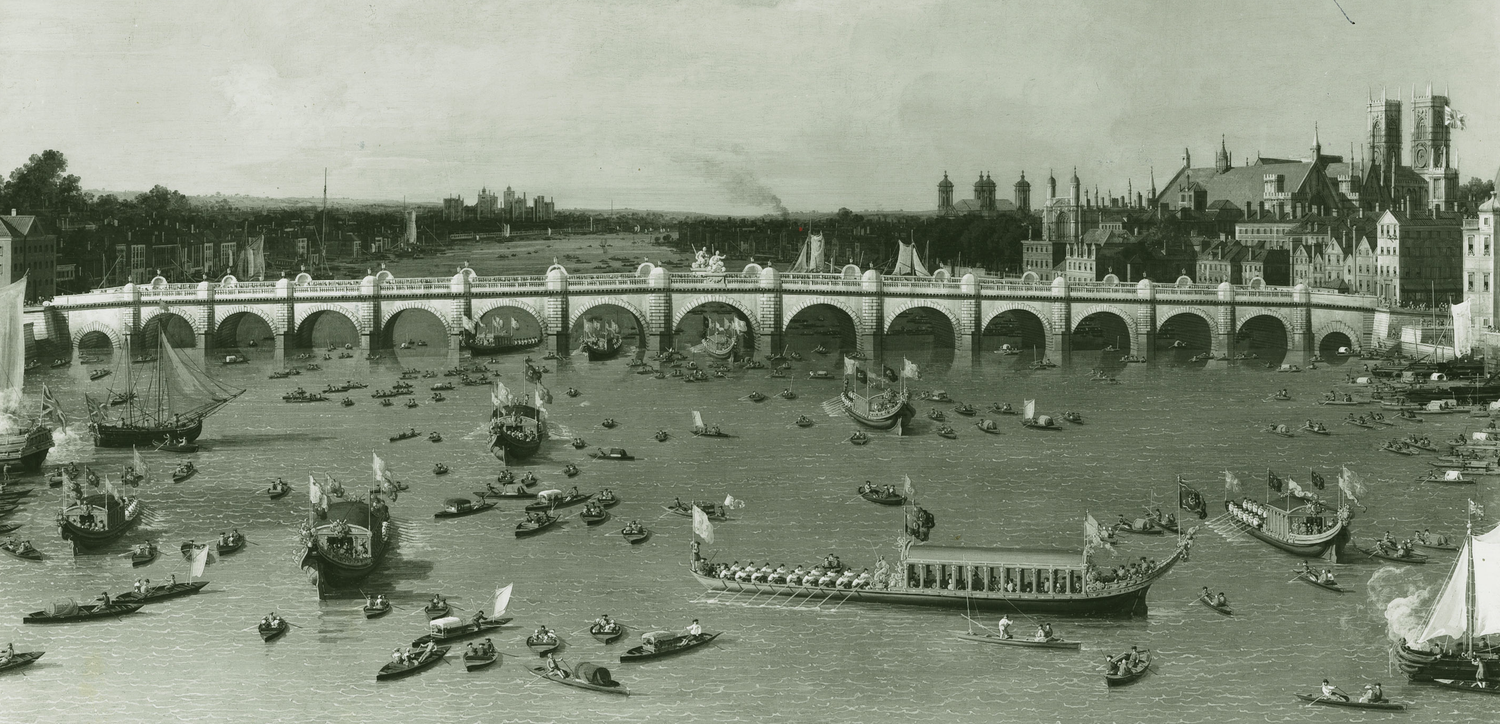
Fig. 5.6: Westminster Bridge. By Giovanni Antonio Canaletto, 1747. The Lord Mayor’s procession on the River Thames. This second bridge in London over the river is nearly finished in this painting; final construction can be seen at the far right. Courtesy of the Yale Center for British Art, Paul Mellon Collection.
Montagu House, which earlier had nearly been acquired by the Foundling Hospital, was located at the north end of town on Bloomsbury Square, the fashionable home to rich physicians such as Sloane and Mead (Figs. 5.3–5.4). Designed in the French style for Ralph, later first duke of Montagu, by Robert Hooke, the versatile curator of experiments of the Royal Society, the original house had burned down, replaced by a house resembling a contemporary Parisian hôtel. It had an imposing façade with colonnades, an entrance topped by a cupola, wings extending to the front to form a courtyard, an interior of spacious and lofty apartments with paintings on the walls, and, in general, the grandeur befitting a great library and scientific collection in the nation’s capital. Given the great load it was to bear, of equal significance was the sober evaluation by the standing committee, to which Cavendish belonged, that the house was a “Substantial, well built Brick Building.” Seven and a half acres of garden came with it, to which Cavendish’s friend and fellow trustee William Watson
The collections of the British Museum
At first, a two-month reservation was required to secure a seat in a dark space in the basement used as the reading room, but after the novelty wore off the room proved ample; a few months after the Museum had opened, Thomas Gray found himself one of only five readers, the others being the antiquarian William Stukeley
Cavendish’s own researches were directed to questions of basic science, but he was interested in the uses of science too. On 8 June 1757, he was elected a member of the Society of Arts
The bridging of the River Thames at Westminster
Renewed interest in a new bridge took the form of two petitions to Parliament in 1721, leading to a committee and a bridge bill. The House of Commons did not act, probably for political reasons, since Walpole, who favored the bridge and was on the committee, was well hated by then.28 When in 1736 another petition for a bridge was submitted to the Commons, the resulting committee, which could hear testimony of any kind, chose to hear technical testimony, undoubtedly hoping in this way to avoid the commercial controversy that had upset bridge plans in the past. J.T. Desaguliers, the curator of experiments for the Royal Society, addressed the committee on the “proper Instruments for boring the Soil under the River Thames.”29
The Westminster Bridge Bill of 1736 set up a commission, with about 175 members, a good proportion of whom were members of Parliament. They also included such an obviously useful person as the director of the Bank of England as well as dukes, bishops, and admirals, who were useful in other, more or less obvious ways. The first meeting was held in June 1736, at which time the commissioners viewed models of the bridge that had been exhibited in the House of Commons, and they set up a lottery with the Bank of England to finance the construction.30
A good many of the commissioners were fellows of the Royal Society
Although at the beginning, the committee of works resolved to consider only wooden bridges for reasons of cost,32 nevertheless it and the commissioners heard the stone-bridge advocate Charles Labelye
Labelye was not a fellow of the Royal Society, but he was friends with a good number of men who were. In the middle of building the bridge, he sent the president of the Royal Society Folkes a calculation about the card game whist.36 The prospect of a gambling bridge-builder could be unnerving, but Labelye was only carrying out an exercise in De Moivre’s subject, the doctrine of chances. Labelye was a good enough mathematician for Desaguliers to publish his investigation of the vis viva controversy in mechanics.37
At a meeting of the commissioners in August 1738, Cavendish heard a report about a violent opposition to the bridge. Angered by the threat of losing their trade to the bridge, watermen ran their barges into the boats moored beside the pile-driving engine. After the commissioners decided to advertise that part of the bridge act that legislated the death penalty for anyone found guilty of sabotaging the bridge works, the engine was tried without incident. The designer of the engine brought a model to a meeting of the Royal Society, and Desaguliers published a description and drawing of it in his Course of Experimental Philosophy. When in January 1739, the foundation for the first pier was finished, the earl of Pembroke laid the first stone “with great Formality, Guns firing, Flags displaying.”
Technical problems dogged construction all the way, the most damaging of which was the gradual sinking of the bridge. It was supposed to bear 1200 tons, but when it was loaded with 250 tons of cannon as a test, it began to fail. “Westminster-Bridge continues in a most declining Way,” Thomas Birch
The first Westminster Bridge lasted only about a century, a brief life compared with the six hundred years of London Bridge, but that was not owing to faulty construction. Once Westminster Bridge was built, the rickety condition of London Bridge gave rise to alarm. On Labelye’s advice, some of its piers were removed, but the piers had acted as a dam, and when they were removed the tide eroded the riverbed and ground away at the piers of Westminster Bridge. Labelye’s beautiful bridge had to be replaced.41
Halfway into the construction, Labelye wrote that the bridge commissioners “have nothing, and can expect nothing, but Trouble for their Pains,” and that he admired their selfless “publick Spirit” and “Patience.”42 Labelye
Scientific Administration
We begin this discussion by recalling some basic facts about the running of the Royal Society
After being a member for eight years, Cavendish
The Royal Society was now in its third home, a quiet, central location in Crane Court
The minutes of the Council listed Lord Charles Cavendish first after the president, except when Lord Macclesfield
Meetings of the Council typically dealt with money: payment of bills from printers, bookbinders, solicitors, and instrument makers; payment of debts; payment of insurance on the houses owned by the Society; and payment of salaries. Besides handling these matters routinely as they came up in Council, Cavendish usually went over them all again, since nearly every year he was appointed to a committee of auditors of the treasurer’s account
Recently the Philosophical Transactions had been criticized for publishing thin material. The critic John Hill
Although a committee would decide on which papers were to be published, a secretary continued to screen papers presented to the Society. The role of a secretary in controlling access to the Society can be seen in the exchange of letters between Thomas Birch
In April 1752, the committee of papers convened for the first time, Cavendish presiding. Macclesfield came to the first three meetings, but then dropped out, returning at the end of the year when he became the new president of the Royal Society. Cavendish chaired all of the meetings but one through November 1752. In 1753 Cavendish was not on the Council and the committee. When he returned to the Council in 1754, he attended every meeting of the committee, and this remained his habit in the years following; after him, Burrow
The work of the committee of papers was demanding. In the years before 1740, the number of papers reached a peak of well over 100 per annum on the average. After that, the number fell off, but slowly, and the load remained considerable through Cavendish’s years on the committee. At the time the committee was formed, there was a backlog of papers, which the committee went through chronologically, beginning with January 1751, taking several meetings to get through that year: at its first meeting, the committee approved sixteen papers for publication, at its second meeting fifteen, and at its third twenty-four. Daniel Wray
To evaluate critically every paper that came before the Royal Society was a good way to keep abreast of what went on in science, though we think that Cavendish’s primary motivation was service to the Society. Procedures applying to the Philosophical Transactions were considered important, since its contents were the public record of the Society, on which its external authority largely rested. Decisions arrived at by men who were active in science and in the Society were likely to be competent and fair. Cavendish helped get the committee off to a conscientious start in its first year.
Cavendish
As in the British Museum, Cavendish’s interest in books and manuscripts together with his accounting skills was put to use in the Royal Society, where he served as one of the inspectors of the library
Elected during Sloane’s presidency, Cavendish served through Folke’s, Macclesfield’s
Science
We begin with Charles Cavendish’s earliest recorded scientific observations, which took place soon after his election to the Royal Society. In June 1728 at James Bradley’s
With his new instrument Bradley observed small motions of stars passing nearly through the zenith, motions which he knew were too large and in the wrong direction to be caused by the parallax of the fixed stars. His explanation was that the motion of the zenith stars was the resultant of two motions, the orbital motion of the Earth and the motion of light. In his announcement of Bradley’s discovery of the aberration of light to the Royal Society, Halley observed that the “three Grand Doctrines in Modern Astronomy do receive a Great Light and Confirmation from this one Single Motion of the Stars Vizt. The Motion of the Earth, The Motion of Light and the immense distance of the Stars.”62 Bradley had, in fact, provided the first direct evidence of the Copernican theory, and the twenty-four-year-old Charles Cavendish had had a brush with this grand work of observation and reasoning in astronomy.
We assume that Cavendish learned about instruments from Bradley. Cavendish was able to return the favor several years later after Bradley had moved from Wansted to Oxford, a few miles from Macclesfield’s Shirburne Castle, where Bradley regularly made observations. When Bradley became a candidate to succeed Halley as astronomer royal, Macclesfield
We learn of Cavendish’s next recorded observations from a passing remark by his friend William Watson
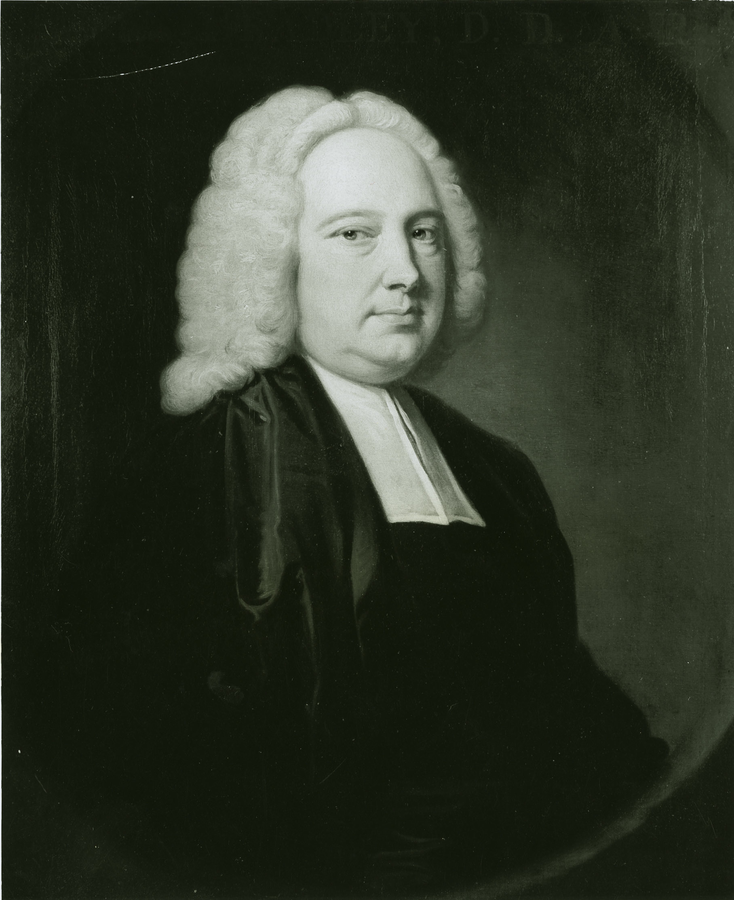
Fig. 5.7: James Bradley. Painting by Thomas Hudson, around 1742–47. Wikimedia Commons.
Unlike his own work, which he kept to himself or communicated privately or, at most, allowed a colleague to mention publicly, Cavendish’s
In 1742, Cavendish accepted another assignment having to do with accuracy of measurement. The project was to compare the Royal Society’s
In 1747 William Watson
More important was Cavendish’s
“It were to be wished, that this noble philosopher would communicate more of his experiments to the world, as he makes many, and with great accuracy,” Benjamin Franklin
From the summer of 1760 to early 1763, the Council of the Society
The best-documented example of Charles Cavendish’s
Doubts were raised about Canton’s experiments in the Monthly Review, which although it was not a scientific journal nevertheless reviewed critically the contents of the Philosophical Transactions. When the Royal Society decided to honor Canton with his second Copley Medal—his first was for experiments on magnetism—for his proof of the compressibility of water, the journal hinted that it was to the Society’s dishonor.77 The new president of the Royal Society, Lord Morton
The larger committee contained a principal skeptic of Canton’s claims. Francis Blake
In a paper drawn up for the Council, Cavendish stated and answered the objections to Canton’s experiments.82 The first objection went to the heart of the matter, the conflict with the Florentine experiment: experiment is authority, Cavendish said, and experiment can overrule experiment. In response to Blake’s objections, Cavendish wrote a separate paper, which he began by making the same point: “The authority of the most able experimenters is of no weight, when it appears that their experiments were made in such a way, as could not possibly show so small a degree of compressibility as Mr. Canton has discovered.”83 There had been progress in the art of experiment in the century since the Florentine experiments, Cavendish said, evidence of which was Canton’s skillful demonstration of “so small a degree of compressibility.”
We are indebted to the Canton controversy for the only surviving direct record of Cavendish’s
In November 1765, the Council resolved that the hypothesis of the compressibility of water accounts for Canton’s experiments and that no other appears to do so as satisfactorily, on which basis it voted to award Canton the Copley Medal for 1764.84 Two days later, at the anniversary meeting of the Society when the award was announced, the president Morton
Cavendish described several self-registering thermometers
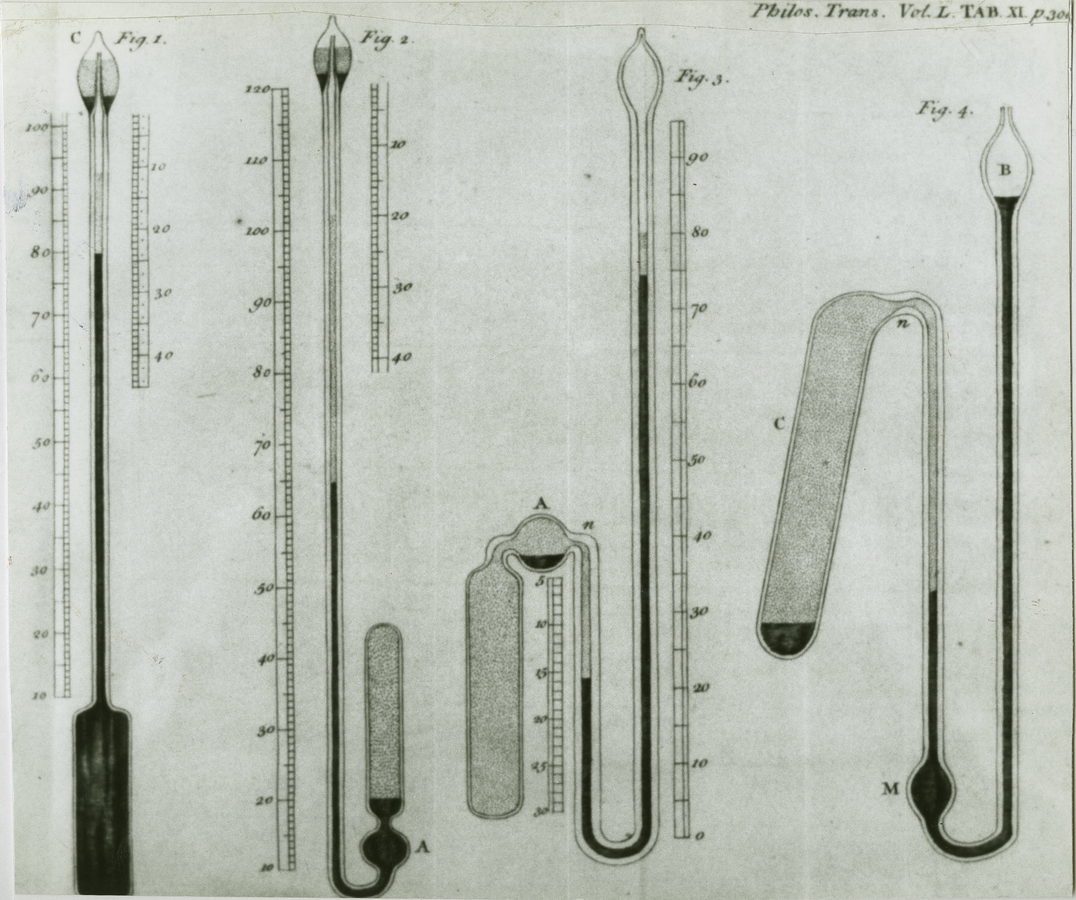
Fig. 5.8: Charles Cavendish’s Thermometers. The thermometer
Apart from their lofty phrasing, Macclesfield’s
Information about Cavendish’s researches away from the Royal Society is fragmentary. His electrical experiments were brought up earlier, referred to by Watson and Franklin. His son Henry’s
Cavendish converted water to vapor and back with an ingenious and very simple apparatus, similar to Canton’s. He filled a barometer enlarged into a ball on top with mercury and then introduced a small quantity of water above the mercury. The level of the mercury immediately lowered because of the pressure of the water vapor above it, the degree of lowering depending on the temperature. In a memorandum, Henry Cavendish wrote, “My father’s experiments [with the apparatus] on which what I said concerning the turning of water into vapour are founded seem so convincing as to leave no doubt of the truth of it.”100 With this tribute to Charles Cavendish by Henry Cavendish, we conclude Part I. In Part II, we move from the life of the father to the life of the son.
Footnotes
R.H. Nichols and F.A. Wray (1935, 16, 19). Roy Porter (1982, 302–303).
John Summerson (1978, 119–120).
Ruth K. McClure (1981, 205–218). William Watson (1768). Charles Creighton (1965, 500, 514).
Nichols and Wray (1935, 131, 182).
Francis Grant (1750, 37). Anonym (1750a, 13, 46). Anonym (1750b). Mr. Horsley (1750). Bob Harris (1999, 285, 291, 293, 296, 298, 304, 307).
Harris (1999, 286, 291, 305–306, 308, 312). Cavendish was a member of the Council of the Society in 1756, 1763, 1764, and likely in other years too. “The Monthly Chronicler,” 30 November, The London Magazine. For November, 1756.
Dedication on 31 Dec. 1741, a month after Sloane’s resignation: PT, vol. 41, for 1739–40, published in 1744.
Sloane’s printed will: BL Add Mss 36269, ff. 39–54. A handwritten list in 1753 of additional trustees includes Cavendish, f. 57.
Esdaile (1946, 30, 323). A.E. Gunther (1979, 209–210, 214–215).
Thomas Birch’s minutes of the meetings of the trustees of the British Museum: BL Add Mss 4450, ff. 1 and following. “Minutes of the General Meetings and the Standing Committee Meetings of the Trustees of the British Museum,” ibid., 4451, ff. 3 and following.
Esdaile (1946, 39–40). Miller (1974, 50–54).
“Rules proposed to be Observed in Making the Collections of Proper Use to the Public by Way of Resolutions in a General Meeting of the Trustees,” BL Add Mss 4449, f. 115.
“Qualifications and Duty Required in the Principal Librarian,” BL Add Mss 4449, f. 108. “Rules Proposed to be Observed in Making the Collections of Proper Use to the Publick by Way of Resolutions in a General Meeting of the Trustees,” ibid., f. 115.
Emanuel Mendes da Costa applied to be an underlibrarian at the British Museum with these credentials: he was a longtime fellow of the Royal Society, an expert on fossils, and fluent in the all of the main languages. Letter to Lord Hardwicke, 4 Feb. 1756, BL Add Mss 36269, ff. 100–101. William Watson considered Da Costa to be eminently qualified, but his “religion is an unsurmountable object.” Letters to the archbishop of Canterbury, 21 June 1756, and Lord Hardwicke, 22 June 1756, BL 36269, ff. 139–142, 144–145. A few years later Da Costa asked Thomas Birch if it was “obnoxious to the Society that I (as by Profession a Jew) can put up for Hawksbee’s place” in the Royal Society. Letter of 17 Jan. 1763, BL Add Mss 4317, f. 113.
Gowin Knight to Lord Hardwicke, and 22 Sep. 1754, BL 36269, ff. 29–30.
BL Add Mss 36269, f. 134.
J. Jortin to Lord Hardwicke, n.d. and 12 Feb. 1756, BL Add Mss 36269, ff. 104–106.
“Morton, Charles,” DNB, 1st ed. 13:1047–48,
The underlibrarians were naturalists, and their assistants were antiquarians, an unworkable combination, it turned out. The different parts of the British Museum required different talents, which had to be properly assigned, Watson explained: “We have an extensive collection of the productions of nature & of art; a very large medical & philosophical library; as well as one relating to antiquities, & a vast collection of coins.” The friction among the staff was rooted in this fact: “it must require a great length of time for any person to have a competent knowledge of any one branch of the Museum & unless he be acquainted with it, he will be but little qualified to instruct others.” The proper persons had to be matched up with the proper subjects. Typical good sense from William Watson to the archbishop of Canterbury, 21 June 1756.
Gosse (1906, 141–142).
“Persons Admitted to Reading Room Jan. 12. 1759 to May 11. 1763,” BL Add Mss 45867.
26 Mar., 9 and 30 Apr. 1760, Minutes of the Society, Royal Society of Arts, 5. Derek Hudson and Kenneth W. Luckhurst (1954, 6). Royal Society of Arts (1768). Henry Trueman Wood (1913, 28–46).
R.J.B. Walker (1979, 12–32).
Walker (1979, 44–49).
16 Feb. 1735/36, Great Britain, Parliament, House of Commons Journals 22:569. Hereafter HCJ.
Walker (1979, 63–67).
Besides Cavendish, three other members of the committee had been fellows of the Royal Society since the 1720s: the chairman of the committee, Joseph Danvers, M.P., a lawyer by training and now a landowner; David Papillon, M.P., practicing lawyer; Thomas Viscount Gage, M.P., from 1743 master of the household to the prince of Wales. Walker (1979, 79, 86 n.7.)
5 Aug. 1737, Minutes of the Committee of Works, vol. 1: Aug. 1737–Sept. 1744, Public Record Office, Kew, Work 6/39.
16 Feb. 1735/36, HCJ 22:569. J.T. Desaguliers (1744, 2:506).
Walker (1979, 83–86).
Charles Labelye to Martin Folkes, 22 Mar. 1741/42, Folkes Correspondence, Royal Society.
Charles Labelye to J.T. Desaguliers, 15 Apr. 1735, published in Desaguliers (1744, 2:77, 89–91).
Walker (1979, 91–95). Desaguliers (1744, 2:417–418).
Thomas Birch to Philip Yorke, 12, 19 Sep. 1747, 11, 18, June 1748, BL Add Mss 35397, ff. 72–76, 114–116.
Summerson (1978, 113–116).
Samuel Smiles (1874, 70–71, 140–142).
Charles Labelye (1743, 24–25).
Minutes of the Committee of Accounts, vol. 1:1738–1744, Public Record Office, Kew, Work 6/41.
20 Aug. 1730, Minutes of Council, Royal Society 3:50–61.
Information from the Royal Society, Minutes of Council.
Bound with the minutes of the committee of papers is a printed membership list for the Royal Society in 1749. The total British membership then was around 340, and of these around 45 were aristocrats, counting bishops and persons like Cavendish with the courtesy title “Lord.”
Kevin J. Fraser (1994, 44, 48–51). John Hill (1751).
20 Feb., 19 and 26 Mar. 1752, Minutes of Council, Royal Society 4:55, 64, 71–75, 83.
27 Feb. 1752, ibid. 4:64–65.
19 Mar. 1752, ibid. 4:76.
Measures were taken to eliminate unnecessary duplication of records, and to make progress in “methodizing” the orders of the Council “relative to the offices of Clerk, Librarian, Keeper of the Repository, Housekeeper, Mace-bearer and Porter.” “Proposal Concerning the Papers of the Royal Society,” presumably by Macclesfield, BL Add Mss 4441. It was found that papers presented before the Society ended up in two kinds of books, while only one, the minutes of ordinary meetings, was needed. 12 July 1742, Minutes of Council 3:285; 1 Feb. 1763, ibid. 5:1.
Letters between Samuel Bamfield and Thomas Birch c. 1761–64, BL Add Mss 4300.
Rough notes of the meetings of the committee of papers taken by Thomas Birch, one of the secretaries, in “Minutes of the Royal Society,” vols. 1 and 2, Birch Collection, BL Add Mss 4445–46.
Daniel Wray to Philip Yorke, 5 July 1752, Hardwicke Papers, BL Add Mss 35401, f. 157.
Raymond Phineas Stearns (1970, 97–98). Bazerman (1988, 81).
Upon the death of the astronomer royal James Bradley in 1762, his executors removed his observation books from the Royal Observatory, claiming them as private property. In 1763, Maskelyne addressed the Royal Society on the subject of their recovery. To reimpose its authority, the Royal Society requested a new warrant from the king, which he granted in 1765, appointing the president and Council of the Society to be visitors of the Royal Observatory. “Visitations of Greenwich Observatory, 1763 to 1815,” Royal Society, Ms. 600, XIV.d.11, ff. 6 passim. Cavendish to Banks, 19 May 1781.
Andrew Coltee Ducarel to Thomas Birch, 13 Oct. 1763, Birch Correspondence, BL Add Mss 4305, 4:57. “I compute about 1000 vol to whit the Norfork 500 MSS & 3000 printed. The Society Library about 6000 printed books only.” Emanuel Mendes da Costa to William Borlase, 9 July 1763, E. da Costa Correspondence, BL Add Mss 28535, 2:150. Reports of the inspectors of the libraries of the Royal Society, 6 June 1768, 6 April 1769, and 25 July 1770, Minutes of Council, Royal Society 5:308, 6:25–26, 62–65.
Daniel Wray to Lord Hardwicke, 22 Oct. 1768, in George Hardinge (1815, 137). Next month, James West presided over them.
14 Nov. 1728, JB, Royal Society 13:260–262, on 261–262. Together with Samuel Molyneux, Bradley looked for the parallax of the star Gamma Draconis, which would appear as a small annual cyclical motion of the apparent position of the star. They observed a small annual cyclical motion, but not the one they expected, for which they had no explanation. After Molyneux died in 1728, Bradley found the explanation in the “aberration of light.”
Lord Macclesfield to William Jones, 13 Jan. 1741/42; Lord Macclesfield to Lord Hardwicke, 13 Jan. 1741/42, in Rigaud (1832, xlvi).
The persons Cavendish came together with on the committee were known for their accuracy: mathematicians De Moivre and his circle, Folkes, Jones, and Macclesfield; astronomers Bradley and Halley (and Macclesfield); instrument makers John Hadley and George Graham; the versatile James Jurin; and Cambridge professors of natural philosophy and mathematics Robert Smith and John Colson.
The act of 1763 altered the original act of 1714. The other members of the new committee were Lord Morton, Lord Willoughby, George Lewis Scott, James Short, John Michell, Alexander Cumming, Thomas Mudge, William Frodsham, and James Green. Only the instrument maker Short and the watchmakers Frodsham and Green were satisfied with Harrison’s explanation of his clock. Cavendish was appointed by the Board of Longitude to another committee; John Bird deputized for him this time. E.G.R. Taylor (1966, 126, 170, 172). “Some Account of Mr. Harrison’s Invention for Determining the Longitude at Sea, and for Correcting the Charts of the Coasts. Delivered to the Commissioners of the Longitude, January 16th, 1741–2”; in John Harrison (1763, 7–8, 19, 21). Humphry Quill (1966, 5–6, 120–122, 139–146, 186, 221).
“An Account of the Proportions of the English and French Measures and Weights, from the Standards of the Same, Kept at the Royal Society,” PT 42 (1742, 185–88). “An Account of the Comparison Lately Made by Some Gentlemen of the Royal Society, of the Standard of a Yard, and the Several Weights Lately Made for Their Use; with the Original Standards of Measures and Weights in the Exchequer, and Others Kept for Public Use, at Guild-Hall, the Tower, &c.,” PT 42:541–556. H. Hall and F.J. Nicholas (1929, 40). Of the seven witnesses, five we have met in connection with De Moivre: Folkes, who was then president, Macclesfield, Jones, Peter Davall, and Cavendish. The other two were the instrument-maker Hadley and the secretary Cromwell Mortimer.
Thomas Birch to Philip Yorke, 15 Aug. 1747, BL Add Mss 35397, ff. 70–71.
17 Oct. 1748, Minutes of Council, Royal Society 4:15.
William Watson (1752c, 370–371).
Benjamin Franklin to Ebenezer Kinnersley, 20 Feb. 1762, ed. L.W. Larabee (1966, 10:42).
Weld (1848, 2:11–19). A. Pannekoek (1961, 284–287). J.D. North (1995, 352–354).
27 May 1762, Minutes of Council, Royal Society 4:333–34. Thomas Birch to Philip Yorke, 6 Sep. 1760, 20 June 1761, BL Add Mss 35399, ff. 153, 207.
25 June 1761, 25 Oct. 1764, Minutes of Council, Royal Society 4:45.
John Canton (1762; 1764). John Canton to Benjamin Franklin, 29 June 1764, in ed. L.W. Larabee (1967, 11:245).
The Monthly Review 29 (1763): 142–144, and 33 (1765): 455–456, on 456.
Lord Morton to Thomas Birch, 6 and 17 Nov. 1764, BL Add Mss 4315, ff. 13, 16.
Besides Cavendish, the committee consisted of the president Lord Morton, Matthew Raper, John Ellicott, James Short, William Watson, Israel Mauduit, and Charles Morton. 28 Nov. 1764, Minutes of Council, Royal Society 5:57. Francis Blake, Edward Delaval, Benjamin Franklin, and George Lewis Scott were added to the committee: 21 Feb., 17 June 1765, ibid. 5:62–63, 109.
They were John Bird, James Ferguson, and Edward Nairne. John Bird is referred to in Cavendish’s memoranda on the experiments. James Ferguson was paid for his work: 10 July 1766, Royal Society, Minutes of Council 5:161. Edward Nairne was also appointed according to Lord Morton: 30 Nov. 1765, JB, Royal Society 25:655.
Francis Blake, “Remarks and Queries Recommended to the Consideration of the Right Honourable the Earl of Morton,” Canton Papers, Royal Society, 3.
Canton Papers, Royal Society, 3. These objections are contained also in a much longer (11-page) paper, which would also seem to have been written by Cavendish, though the copy in the Canton Papers is not in his handwriting.
Charles Cavendish “Observations on Mr. Blake’s Objections to Mr Canton’s Experiments,” Canton Papers, Royal Society.
21 and 28 Nov. 1765, Minutes of Council, Royal Society 5:131–132.
30 Nov. 1765, JB, Royal Society 25:656.
Morton’s address, 30 Nov. 1765, JB, Royal Society 25:647–664, on 656. The award of the Copley Medal did not bring the work of the committee to an end; two and a half weeks later, the Council resolved that an experiment on the compressibility of water proposed by Morton be resumed. 19 Dec. 1765, Minutes of Council, Royal Society 5:148.
Charles Cavendish, “A Paper Delivered to Mr da Costa for the Use of the Committee on Mr Canton’s Experiments,” 21 Oct. 1765, and “Appendix to the Paper on Mr Canton’s Experiments,” 5 Dec. 1765, JB, Royal Society 25:668–679. The material is also in the Canton Papers, Royal Society, 3.
The Copley Medal was awarded to Cavendish “on account of his very curious and useful invention of making Thermometers shewing the greatest degrees of heat and cold during the absence of the observer.” 17 and 31 Mar. 1757, JB, Royal Society 22:506, 520; 30 Nov. 1757, ibid. 23:638–648, on 638–639. It has been suggested that the Royal Society may have been influenced by Cavendish’s social standing as well as by the scientific merits of his work. It could be, though it is not clear that in the year 1757 a more deserving work was passed over. William Lewis continued to bring his important experiments on platinum the before the Society, but he had received the Copley Medal in 1754 for earlier experiments in this series. Yakup Bektas and Maurice Crosland (1992, 52).
Charles Cavendish’s values for aqueous vapor tension, given in inches of mercury, are reproduced in an editor’s note, in Sci. Pap. 2:355.
In connection with government taxes on spirits, Henry Cavendish supplied a table of the bulk of water at degrees of heat from 25 to 210°. “From the Experiments of Lord Charles Cavendish, Communicated by Mr. Henry Cavendish. March 1790,” Blagden Collection, Royal Society, Misc. Notes. In the same connection, he communicated the weight of a cubic foot of water, “the result of my father’s experiment.” Henry Cavendish to Charles Blagden, [probably 1790]; in Jungnickel and McCormmach (1999, 673–674).
Henry Cavendish included his father’s table of the depression of mercury in his report on the meteorological instruments of the Royal Society in 1776. Cavendish, (1776b, 116). The table was cited for a long time. Pierre Simon Laplace (1839, 1004).
Thomas Young (1807, 2:391).
Henry Cavendish referred to his father’s chemicals. He mixed dephlogisticated air in a bottle with “a bit of my father’s phosphorus.” 16 June 1781, “Experiments on Air,” Cavendish Mss II, 5:56.
Packet of astronomical observations from 1774, in Charles Cavendish’s hand, with Henry Cavendish’s observations added. Cavendish Mss Misc. We know of Charles Cavendish’s interest in astronomy from other sources; for example, William Ponsonby to duke of Devonshire, 24 Jan. 1744/43, Devon. Coll.: “I have not had an opportunity lately of seeing Lord Charles, but I make no doubt of his Lordship having made proper observations on the Comet, which appears here in great Splendor.”
Charles Cavendish, “Difference to Be Subtracted from Sidereal Time to Reduce It to Mean Time.” This and two other tables of calculations on errors of time by him, in William Ludlam (1769, 145–148).
In 1769 Charles Cavendish’s good friend the physician William Heberden published a paper in the Philosophical Transactions comparing the rainfall at the bottom of a tall building with that at the top. Benjamin Franklin had an explanation, which he put in a letter where he referred to the experiments of Heberden and Charles Cavendish, both “very accurate experimenters.” Benjamin Franklin to Thomas Percival, [probably June 1771], in ed. W.B. Wilcox (1969/1974, 155).
Letters from William Borlase to Thomas Hornsby in 1766 and to Charles Lyttleton in 1767, quoted in J. Oliver (1969, 293). William Heberden included Charles Cavendish’s readings of the greatest cold at night for twenty years, as he recorded them at his house on Great Marlborough Street, in Heberden (1788, 66).
In his report on the Royal Society’s meteorological instruments, Henry Cavendish said that the variation compass had a contrivance “taken from an instrument of Lord Charles Cavendish.” Henry Cavendish (1776b, 120).
This two-sheet memorandum concerns the simple additivity of air pressure and the pressure of water vapor. Cavendish Mss IV, 4.
